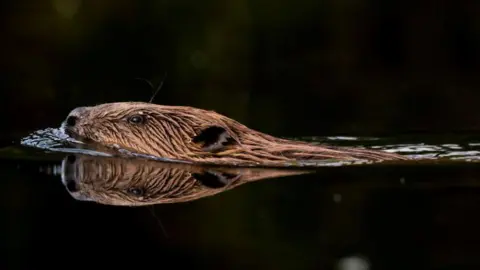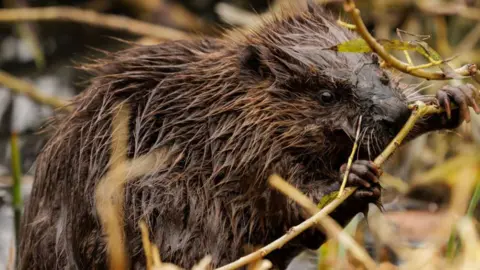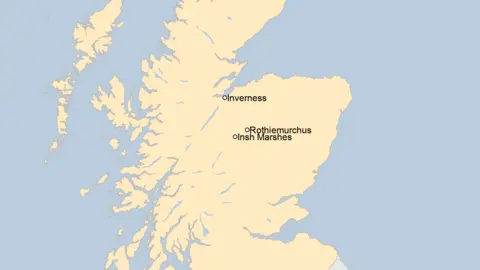Farmers raise concerns over Cairngorms beavers
 Getty Images
Getty Images- A small number of beavers could be released in the Cairngorms National Park by the end of December
- The park authority and its project partners said the animals could enhance wetland habitats
- But some local farmers and landowners have concerns about damage to land and crops
- They said more consultation was needed
Some farmers and landowners say a proper consultation has still to be held on proposals to release beavers in the UK's biggest national park.
A small number of the animals could be introduced in the Cairngorms by the end of next month.
The Cairngorms National Park Authority (CNPA), which is involved in the project, said there had been months of public engagement, including a formal six-week process involving in-person meetings.
But some landowners said their concerns about the potential for damage to property and crops had not been addressed.
Kingussie farmer Ruaridh Ormiston said: "The so-called consultation events have painted a very fluffy, cuddly picture of beavers, and I would love it if that were the truth.
"But once we started speaking to communities where beavers have been for up to 20 years in Scotland we saw that's not the real picture.
"Farmers are very concerned."
Beavers died out in Scotland about 400 years ago but were reintroduced to Scotland in 2009.
A licence has been sought from Scotland's nature agency, NatureScot, to release a small number of the animals at three sites:
- Rothiemurchus Estate, near Aviemore
- RSPB Scotland's Insh Marshes, near Kingussie
- Land managed by Wildland Cairngorms - a company owned by billionaires Anne and Anders Holch Povlsens
The sites are within the catchment of the River Spey between Kingussie and Aviemore.
The beavers would be relocated from around the River Tay, specifically from areas where they are seen as a pest because of the damage they have done to farmland.
Beavers would be given a health check before being released in the Cairngorms.
CNPA and RSPB Scotland said beavers could enhance wetland habitats.
One way the animals could do this is through building dams made of branches and tree trunks, which would slow the flow of streams and ditches and stop water from draining away.
The project's partners said this behaviour could improve water quality, boost insect habitats and retain water at times of drought. They also said beaver dams could alleviate the effects of flooding.
 Getty Images
Getty ImagesDr Sarah Henshall, head of conservation at CNPA, said: "Beavers are a keystone species.
"They have the ability to shape and modify their environment. They can restore freshwater habitats."
She said the project had engaged with more than 500 people online and over 100 people had attended face-to-face meetings.
Dr Henshall said the process suggested there were high levels of support for the reintroduction of beavers,
She said a beaver officer had been appointed to monitor the animals and was a point of contact for people with concerns.
Thijs Claes, species recovery officer at Insh Marshes, said it could take 15 years before beavers became abundant in the Cairngorms, and steps would then be taken to manage the population.
He said: "We didn't just say we wanted beavers, we also considered first talking to our neighbours and what they need.
"It's 400 years since beavers were here so no-one really knows how to live with them.
"That was key for us - to make sure our neighbours knew we were involved in the project."

But Mr Ormiston and other farmers said more discussions on the plan were needed.
Robert Macdonald, who farms near Grantown-on-Spey, Strathspey, said it felt as if a decision to release beavers had already been taken.
He said: "The biggest problem is that we weren't consulted on it.
"We were told they [beavers] were coming and then there was no consultation.
"That is causing the biggest animosity among the land managers in Strathspey."

Earlier this year, a family of beavers were moved from Tayside to Loch Lomond as part of efforts to boost biodiversity.
It was only the third time in Scotland that such a translocation had taken place since the first trial at Knapdale in Argyll began in 2009.
It was part of an alternative Scottish government plan to culling the rodents when they cause problems.
The family were moved from an area where beaver activity was having a serious impact.
In the past, farmers have spoken of their anger at the damage beavers cause to their land.
